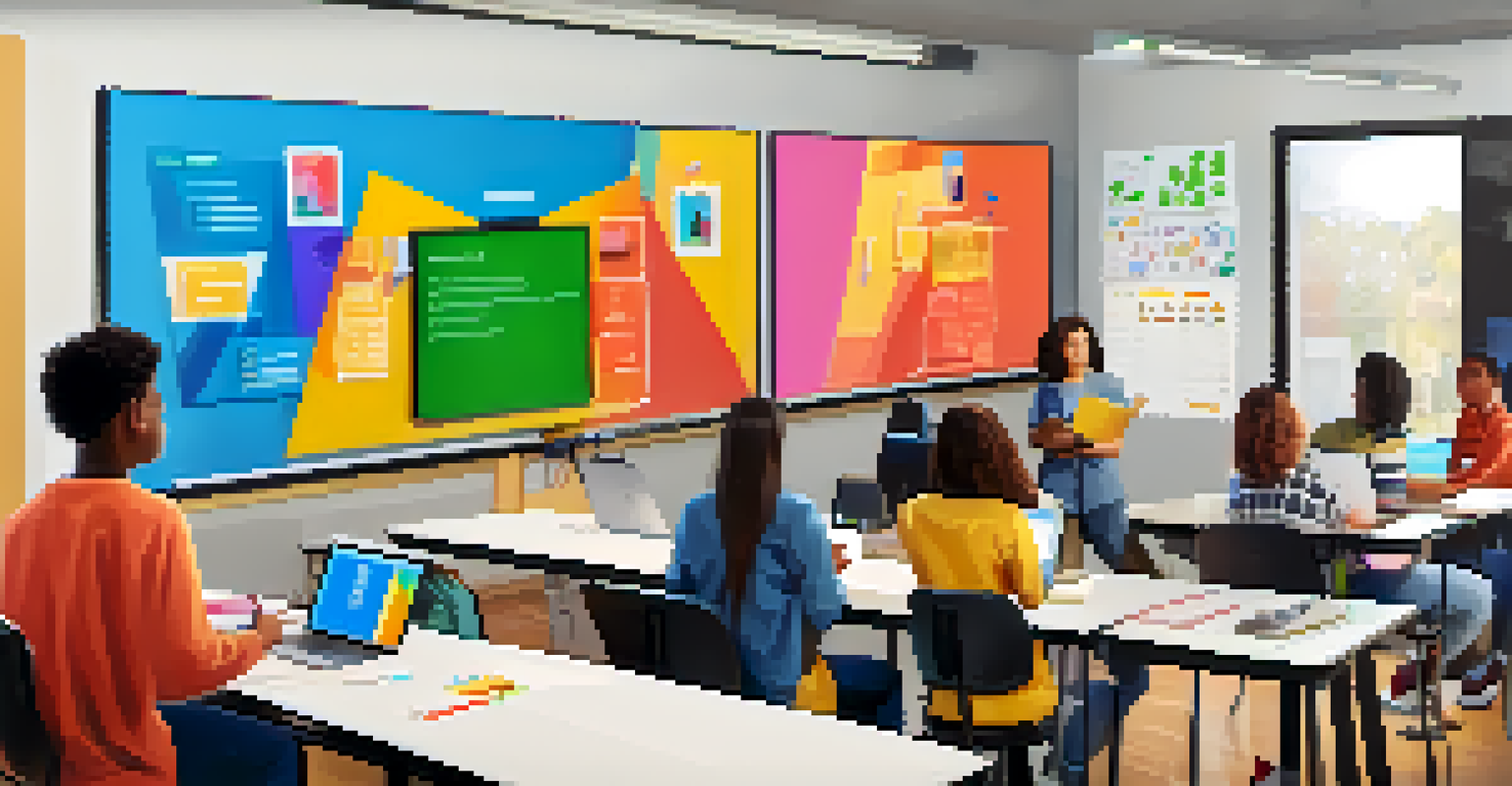Neuroscience of Learning: Strategies for Online Educators

Understanding Neuroscience in Learning Environments
Neuroscience plays a crucial role in how we learn, especially in online settings. It examines the brain's structure and function, providing insights into how we absorb, retain, and recall information. This understanding can empower educators to design courses that align with how the brain naturally processes information.
The brain is wired to learn through experience, making active engagement essential for retention.
For instance, the brain thrives on patterns and connections. By presenting information in a structured manner, educators can help learners form meaningful associations, making the content more memorable. This approach mirrors how we naturally learn through experiences and interactions.
Incorporating neuroscience principles into online education not only enhances comprehension but also fosters engagement. When educators understand the science behind learning, they are better equipped to create dynamic, interactive experiences that resonate with students.
The Importance of Active Learning Techniques
Active learning is a cornerstone of effective education, and neuroscience supports its benefits. When students actively engage with material—through discussions, problem-solving, or hands-on projects—they are more likely to retain information. This engagement stimulates brain activity and helps solidify knowledge.

For online educators, incorporating active learning can be as simple as using interactive quizzes or breakout discussions during virtual classes. These methods encourage participation and allow learners to apply concepts in real-time, reinforcing their understanding.
Neuroscience Enhances Learning Design
Understanding how the brain processes information allows educators to create more effective online courses.
Moreover, active learning promotes critical thinking and creativity. By challenging students to analyze and synthesize information, educators can cultivate a deeper level of comprehension that goes beyond rote memorization.
Utilizing Spaced Repetition for Better Retention
Spaced repetition is a powerful learning technique backed by neuroscience. Instead of cramming information in one sitting, this method involves revisiting material at increasing intervals. Research shows that this approach significantly improves long-term retention.
Learning is not the product of teaching. Learning is the product of the activity of learners.
Online educators can implement spaced repetition through tools like flashcards or scheduled review sessions. By strategically spacing out lessons, students have the opportunity to reinforce their knowledge over time, enhancing their mastery of the subject matter.
This technique not only aids memory retention but also reduces cognitive overload. By breaking information into manageable chunks and revisiting it periodically, learners can process new concepts without feeling overwhelmed.
Creating a Positive Learning Environment
A positive learning environment is essential for student success, and neuroscience highlights its importance. When learners feel safe and supported, their brains are more receptive to new information. Emotional well-being directly impacts cognitive function and engagement.
Online educators should prioritize building a welcoming atmosphere through open communication and encouragement. Simple gestures, such as acknowledging student contributions or providing constructive feedback, can foster a sense of belonging and motivation.
Active Learning Boosts Retention
Engaging students through discussions and hands-on activities significantly improves information retention.
Additionally, integrating collaborative activities can enhance this environment. When students work together, they not only learn from each other but also develop social connections, further enriching their educational experience.
Incorporating Multisensory Learning Approaches
Multisensory learning utilizes multiple senses to enhance the educational experience, and neuroscience supports its effectiveness. Engaging different senses—sight, sound, touch—can help students make connections and retain information more effectively.
For online educators, this might involve using videos, interactive simulations, or even virtual reality experiences. By appealing to various senses, educators can cater to different learning styles and keep students engaged.
Moreover, multisensory approaches can make complex topics more approachable. Visual aids, for example, can simplify intricate concepts, making them easier to grasp and remember.
The Role of Feedback in Learning
Feedback is a vital component of the learning process, and neuroscience emphasizes its impact on student growth. Constructive feedback helps learners understand their progress and areas for improvement, guiding their educational journey.
Online educators should provide timely and specific feedback, allowing students to reflect on their performance. This not only reinforces learning but also encourages a growth mindset, where students view challenges as opportunities to improve.
Feedback Fuels Student Growth
Timely and constructive feedback helps learners understand their progress and motivates them to improve.
Creating a feedback loop, where students can also share their thoughts, fosters a collaborative learning environment. By valuing student input, educators can adapt their methods to better meet learners' needs.
Motivation and Its Influence on Learning Outcomes
Motivation is a key driver of learning, and neuroscience reveals how it impacts brain function. When students are motivated, their brains release dopamine, which enhances focus and encourages persistence. This underscores the need for educators to cultivate intrinsic motivation.
Online educators can inspire motivation by connecting course material to real-life applications or student interests. When learners see the relevance of what they’re studying, they are more likely to engage with the content.

Additionally, incorporating gamification elements—such as rewards and challenges—can further boost motivation. By making learning enjoyable, educators can foster a sense of achievement that propels students toward their goals.